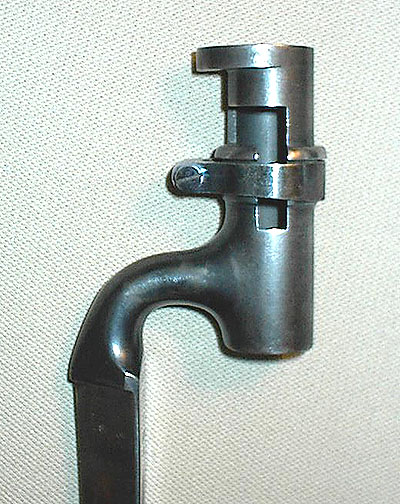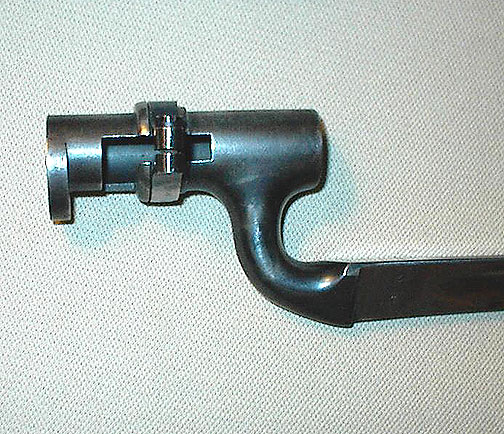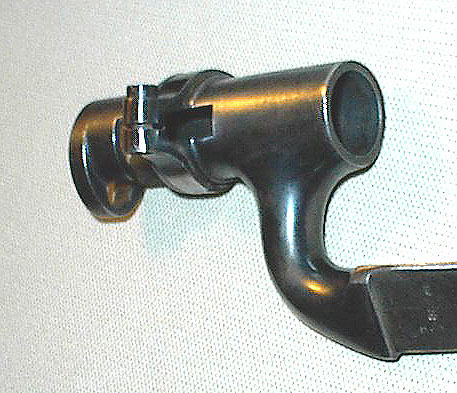"Martini-Henry"
Socket Bayonet

This is a socket bayonet manufactured from the period beginning 1876 and used into the early 1900s.
They are typically British in design in that they have a blade "shoulder" and are shallow fullered,
whereas American bayonets of the period were without a shoulder and had very deep fullers
that extended out the back of the blade.
These are attached by fitting them over the barrel muzzle, and fastened into position by means of a mortise slot and locking ring.
All metal construction.
These were designed to fit the .450" caliber Martini-Henry Single-Shot Rifle made famous during the Zulu Wars.
On this specimen: blade length is ~22" and the muzzle diameter is ~0.718" (internal).
Scabbards were leather with brass throat and drag.
Some differences in common British socket bayonets:
- The 1853 "3-Band" Enfield Socket Bayonet has a common blade-length of 17" to 18" (although longer has been noted on American specimens); the socket internal diameter is ~.781"; the socket-length is ~3". This bayonet - when attached - rests to the right of the barrel-muzzle. The "sight-bridge" is in-line with the blade.
- The 1876 Martini-Henry Socket Bayonet has a blade-length of ~22"; the socket internal diameter is ~.718"; the socket-length is ~3". This bayonet - when attached - rests to the right of the barrel-muzzle. The "sight-bridge" is in-line with the blade.
- The 1895 Martini-Enfield Socket Bayonet has a blade-length of ~22"; the socket internal diameter is ~.656"; the socket-length is ~3". This bayonet - when attached - rests under the barrel-muzzle. The "sight-bridge" is not in-line with the blade, but at 90 degrees to it (this is the easiest way to identify the Pattern 1895).




